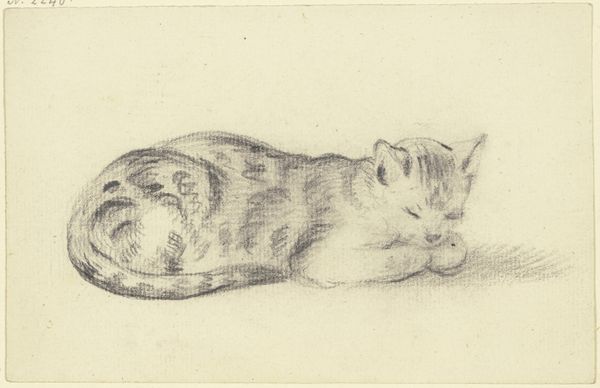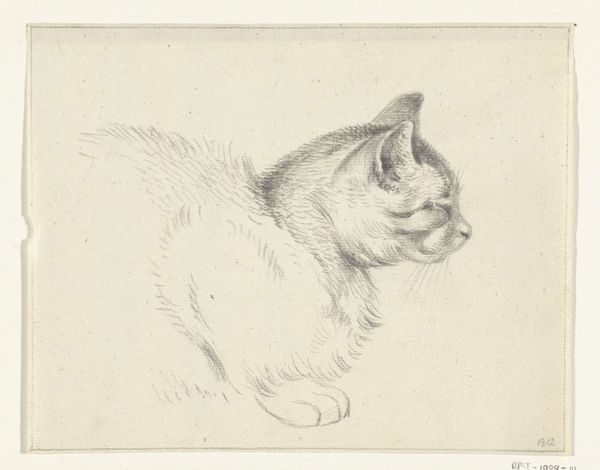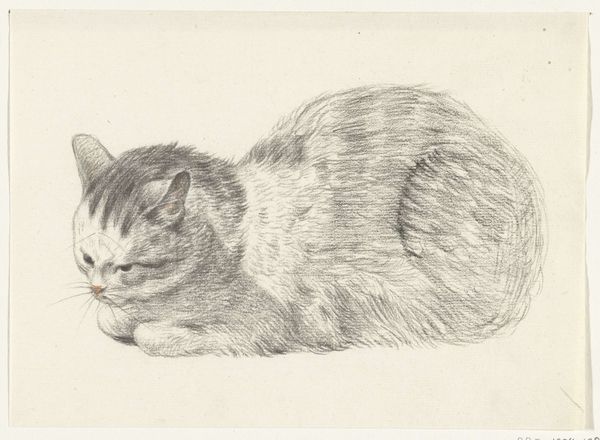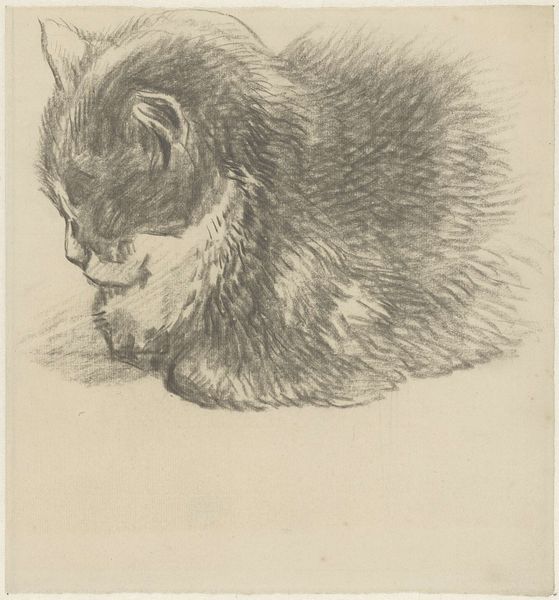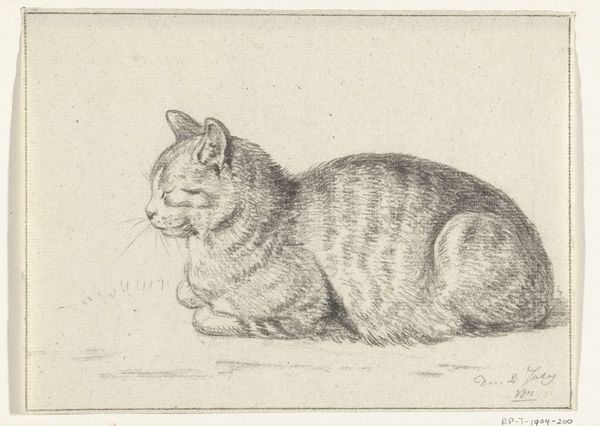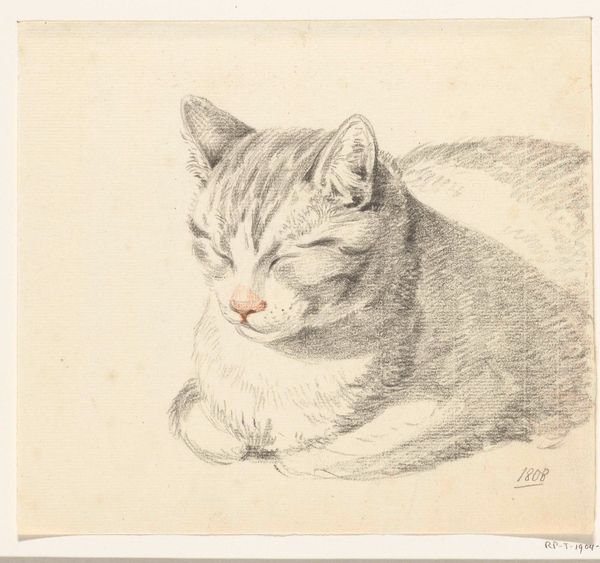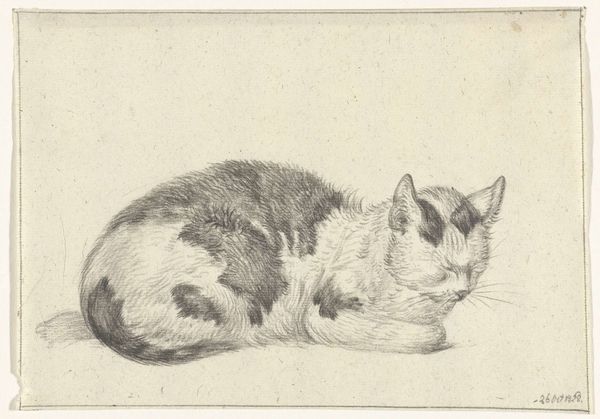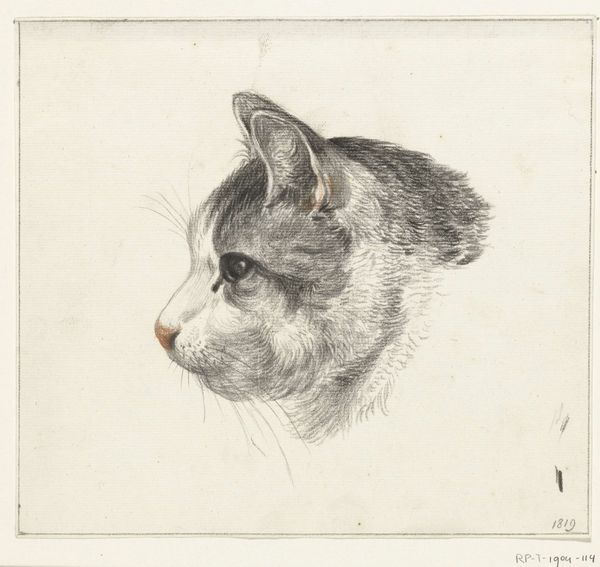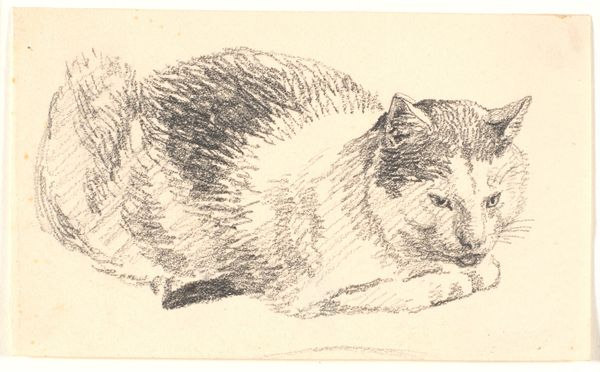
drawing, pencil
#
drawing
#
animal
#
pencil sketch
#
pencil
#
realism
Dimensions: height 136 mm, width 204 mm
Copyright: Rijks Museum: Open Domain
Editor: Here we have Jean Bernard's "Liggende kat, naar rechts", or "Lying Cat, Facing Right", created in 1815 using pencil. It's currently housed in the Rijksmuseum. The drawing captures a serene domestic moment; the cat seems so peaceful. What is your take on this piece? Curator: Well, situated in 1815, we must remember that this drawing emerges within a broader shift in artistic sensibilities. There was a rising interest in realism and naturalism, moving away from strictly idealized forms. The Rijksmuseum possessing this work speaks volumes, situating this particular pencil drawing within a valued cultural and national heritage. How does this "domestic moment" fit in art production at that time? Editor: It does seem quite… informal, especially when I think about grand history paintings, or portraits of wealthy patrons that were popular back then. This is just a simple cat. Curator: Precisely! It’s a quiet observation of everyday life. But the political lies there too. Think of the burgeoning middle class; a growing population with leisure time and domestic pets. Images like this find their audience. Does this realism strike you as objective, or does the artist insert some sort of opinion or preference? Editor: I suppose there is a fondness present in the careful shading, the attention to the fur. Curator: Yes, there is! And who decides whether drawings like this are displayed for the public to consume and analyze? These pieces humanize the Dutch Golden age and offer intimate glimpses. So, the choice to collect and display it is in itself a political statement of which moments from history matter to its nation. Editor: That’s a great point! So a simple drawing like this one is less simple than it seems, then? Curator: Absolutely! It’s a window into shifting social values and artistic practices of the 19th century, filtered through institutional power.
Comments
No comments
Be the first to comment and join the conversation on the ultimate creative platform.
